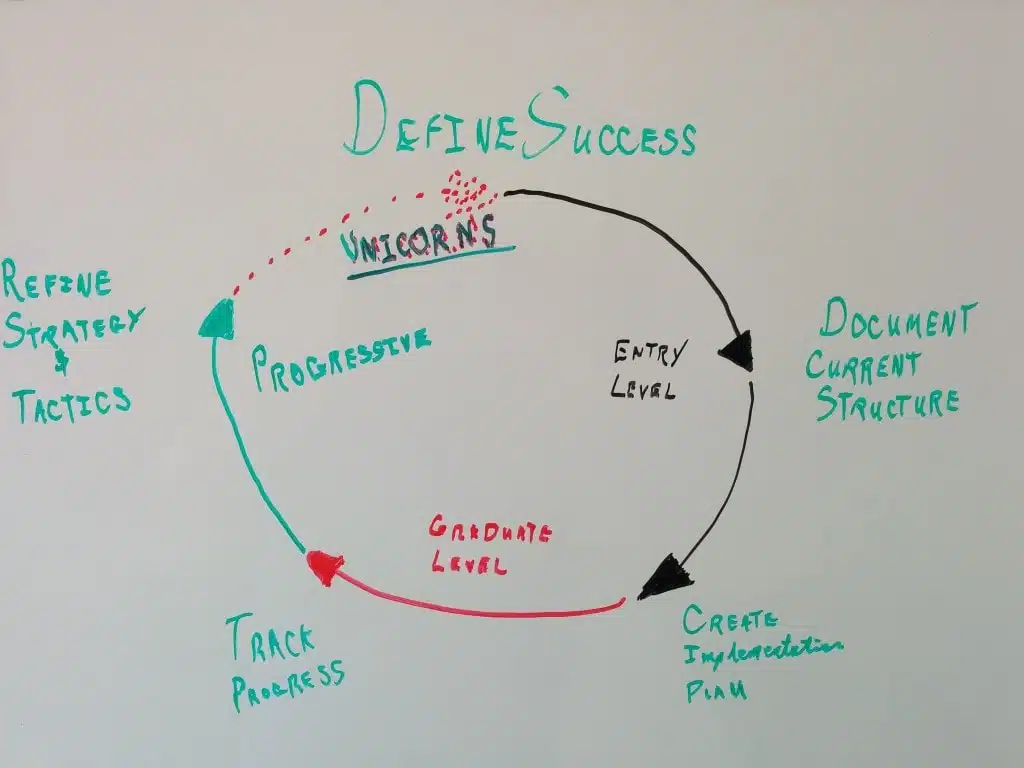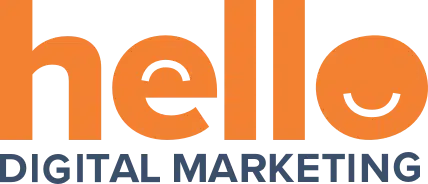

Traditional web design companies – and, by extension, most businesses who have been involved in web marketing for some time – tend to think of everything in terms of web design projects and deliverables.
Let’s build a website. Let’s run a campaign. Let’s do SEO.
Boring. And closed-ended. There’s so little room to breathe, to move – to be agile and responsive to the changes happening every single day in the connected world – it’s stifling!
If we want to grow, we need to move beyond the idea that anything with the web – that anything involved in building a business – ever comes to an end. Even after you’ve launched, even after you’re profitable, even if you’re considering an acquisition offer or expanding your list of physical locations, or looking at a prime pivot from one kind of company to another… Even then, your customers are visiting your website, they’re seeing what you post on Facebook, and your business cycle – for them – hasn’t ended.
And it doesn’t, until they unfollow, unlike, or otherwise disengage with your brand because they’ve outgrown you and you haven’t changed. How do we prevent that?
By moving out of the old deliverable-driven mentality, and into a results-oriented process. Like this one;
Ignore the unicorns and the terrible penmanship for the moment, we’ll get to that later.
We used this whiteboard image very recently in a client meeting – and it worked so well that we thought it would be worth sharing. This process – which you’ll find mirrored with different words in a lot of places, it’s not terribly original, just effective – comes much closer to how we believe marketing should work now than our original web design process ever could.
The project is Entry Level work, and usually nothing more.
Historically, web design projects end up only accounting for two stages of this cycle; documenting current structure, and creating an implementation plan.
And that’s only because knowing what you’re dealing with (documenting current structure) reduces the effort you put into updating the look and feel of a website or marketing asset. That’s been what the basic process looked like for a long time – document, update, and release. Document, update, and release. No room for iteration, no space for organic growth. It’s boring, and rigid. But it keeps happening, because it’s effective in most cases, and helps keep project budgets down.
Moving beyond this process – Graduating from it, as it were – involves monitoring.
We’ll gladly tell anyone that if your website isn’t using Google Analytics or some other tracking tool to at least record what your visitors are doing for analysis later, you’re doing it wrong – full stop.
There’s simply no good excuse left for failing to include crucial tracking in your online marketing, even if you never actually look at it. It will be useful later, in the right hands, and it will help save time and effort down the line.
Why? Because without a record of use, there’s no way to know what your benchmarks are. Once tracking goes in on a new design, or with the beginning of a new project, there’s no way to know if the 10 or 100 or 1000 visits your websites are getting per day are an increase… Or a massive drop in value.
Now that we know what’s going on and how our work is being received, we can start to Refine our Strategy & Tactics.
This is where we get into the real nitty-gritty of moving out of the “I’ve got a website” mentality, and into the “My business runs online” mode of operation. Being willing to refine not only your specific tactics (website designs, advertising campaigns, and most of social marketing all fall into this category – they are not strategies on their own) allows you the freedom to change your overall plans, your broader strategies in much more significant ways. Having the basis to compare our plans to past results (because we documented, then implemented change, and tracked the outcomes) is what unlocks our ability to make progress in a real way.
Think of it this way; if you’re a saddle company (you make saddles for horses) in the early 1900’s in New York, and you find out the city’s about to ban horses within city limits – what do you do?
You can keep selling saddles, and maybe go out of business, because demand is going to hit rock bottom pretty quick… Or you can sell horseback riding instead, and create a sense of demand for your clearly superior horseback riding-related products. Pretty smart, right?
That analogy was used in an internal memo within Tiny Speck, who make Slack – a communications product we use here that we love to death – and it’s an amazing analogy about knowing your audience, and how their needs interface with your offerings. It applies to so many things, like ensuring your websites respond to changes in mobile browsing patterns, or using better inbound marketing procedures to capture a bigger audience.
The first step to getting this rolling must be to Define Success.
That’s why it’s the top of the circle.
It comes before documentation, because it informs your priorities when creating that documentation. It comes after refining strategy and tactics because once you’ve reacted to your recent history and the information therein, you’ll have a better understanding of what you want in the future.
This process – an iterative, recurring approach to making sure it’s impossible for your business to fall behind – is where business unicorns are made. The term unicorn is big in start-ups right now, but it’s an ideal that can be applied to most other marketing processes as well – the idea that you can iterate, improve, and advance quickly using things line lean business processes, agile development, and much tighter strategies for marketing and product development is becoming much more common.
Making smart choices more often leads to a different kind of success – one you’ll know well, because you’ve sat with it and helped shape it much more actively.
We’re going to be talking a lot more about the things that contribute to this kind of success very soon. Things like marketing automation through HubSpot; like creating better marketing assets using frameworks where hand-built tools are unnecessary; and like lead generation tools and processes, to make better use of the marketing you are doing.
As busy as 2014 was, shaking up the web design world, this year and the next will be even busier. We want to make sure you’re prepared for the ride – and not just with a better saddle.
If you want to talk to us directly about what’s coming, please connect with us. Otherwise, feel free to subscribe to this blog, or connect with our social media (those little orange buttons at the bottom of this page) so we can let you know each time something new happens.
Source: Hello BLOG
Recent Articles
Write For Us
Think you’ve got a fresh perspective that will challenge our readers to become better marketers? We’re always looking for authors who can deliver quality articles and blog posts. Hundreds of your peers will read your work, and you will level up in the process.Ready to grow? Say Hello








